Best TensorFlow Tools to Buy in January 2026
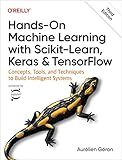
Hands-On Machine Learning with Scikit-Learn, Keras, and TensorFlow: Concepts, Tools, and Techniques to Build Intelligent Systems
- TRACK ML PROJECTS END-TO-END WITH SCIKIT-LEARN EFFICIENCY.
- EXPLORE DIVERSE MODELS: SVMS, DECISION TREES, AND ENSEMBLES.
- MASTER NEURAL NETS WITH TENSORFLOW FOR AI-DRIVEN SOLUTIONS.


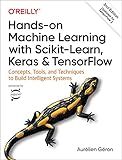
Hands-On Machine Learning with Scikit-Learn, Keras, and TensorFlow: Concepts, Tools, and Techniques to Build Intelligent Systems


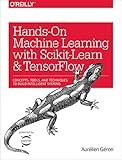
Hands-On Machine Learning with Scikit-Learn and TensorFlow: Concepts, Tools, and Techniques to Build Intelligent Systems


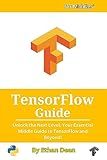
TensorFlow Guide: Unlock the Next Level: Your Essential Middle Guide to TensorFlow and Beyond!


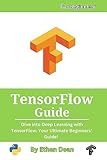
TensorFlow Guide: Dive into Deep Learning with TensorFlow: Your Ultimate Beginners' Guide!


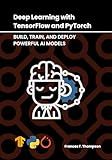
Deep Learning with TensorFlow and PyTorch: Build, Train, and Deploy Powerful AI Models


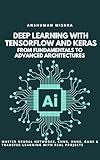
Deep Learning with TensorFlow and Keras: From Fundamentals to Advanced Architectures: Master Neural Networks, CNNs, RNNs, GANs & Transfer Learning with ... Intelligence & Machine Learning)


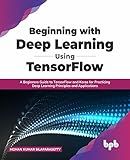
Beginning with Deep Learning Using TensorFlow: A Beginners Guide to TensorFlow and Keras for Practicing Deep Learning Principles and Applications (English Edition)


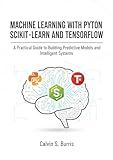
Machine Learning with Python Scikit-Learn and TensorFlow: A Practical Guide to Building Predictive Models and Intelligent Systems


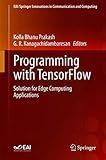
Programming with TensorFlow: Solution for Edge Computing Applications (EAI/Springer Innovations in Communication and Computing)


In TensorFlow, you can fetch specific rows from a tensor using indexing. Here's how you can do it:
- Create a tensor: To demonstrate fetching specific rows, let's first create a sample tensor using tf.constant(). For example: import tensorflow as tf tensor = tf.constant([[1, 2, 3], [4, 5, 6], [7, 8, 9]]) Here, we have a 3x3 tensor with values [1, 2, 3], [4, 5, 6], and [7, 8, 9].
- Fetch specific rows: You can use indexing to fetch specific rows from the tensor. TensorFlow supports both positive and negative indexing. Positive indexes start from 0 for the first row, while negative indexes start from -1 for the last row. For example, to fetch the second row, you can use: row_2 = tensor[1] This will store [4, 5, 6] in the row_2 variable.
- Fetch multiple rows: If you want to fetch multiple rows, you can specify a range using slicing. For instance, to fetch the first and second rows, you can do: rows_1_2 = tensor[0:2] This will store [[1, 2, 3], [4, 5, 6]] in the rows_1_2 variable.
- Fetch a specific row using negative indexing: Negative indexes allow you to fetch rows starting from the end of the tensor. For example, to fetch the last row, you can use: last_row = tensor[-1] This will store [7, 8, 9] in the last_row variable.
By using indexing and slicing techniques as described above, you can fetch specific rows from a tensor in TensorFlow.
How to fetch specific rows from a tensor in TensorFlow?
To fetch specific rows from a tensor in TensorFlow, you can make use of indexing or use the tf.gather() function. Here are examples of both approaches:
- Using indexing:
import tensorflow as tf
Assume we have a tensor 'x'
x = tf.constant([[1, 2, 3], [4, 5, 6], [7, 8, 9]])
Fetch specific rows using indexing
rows = [0, 2] # Rows you want to fetch selected_rows = tf.gather(x, rows)
with tf.Session() as sess: result = sess.run(selected_rows) print(result)
Output:
[[1 2 3] [7 8 9]]
- Using tf.gather():
import tensorflow as tf
Assume we have a tensor 'x'
x = tf.constant([[1, 2, 3], [4, 5, 6], [7, 8, 9]])
Fetch specific rows using tf.gather()
rows = [0, 2] # Rows you want to fetch selected_rows = tf.gather(x, rows)
with tf.Session() as sess: result = sess.run(selected_rows) print(result)
Output:
[[1 2 3] [7 8 9]]
In both cases, the output will be a tensor containing the specified rows.
How to create a tensor in TensorFlow?
In TensorFlow, you can create tensors using the tf.Tensor class. Here are a few ways to create tensors:
- Create a tensor from a Python list or NumPy array:
import tensorflow as tf import numpy as np
From a Python list
tensor1 = tf.convert_to_tensor([1, 2, 3])
From a NumPy array
numpy_array = np.array([[1, 2, 3], [4, 5, 6]]) tensor2 = tf.convert_to_tensor(numpy_array)
- Create a tensor filled with zeros or ones:
tensor_zeros = tf.zeros(shape=(3, 3)) # Create a tensor filled with zeros tensor_ones = tf.ones(shape=(2, 4)) # Create a tensor filled with ones
- Create a tensor from a constant value:
tensor_constant = tf.constant(5, shape=(2, 2)) # Create a tensor filled with constant value 5
- Create a tensor with random values:
tensor_random_uniform = tf.random.uniform(shape=(3, 3), minval=0, maxval=1) # Create a tensor with random values from uniform distribution tensor_random_normal = tf.random.normal(shape=(2, 4), mean=0, stddev=1) # Create a tensor with random values from normal distribution
Note that tensors in TensorFlow are immutable, meaning their values cannot be changed once created. If you want to modify a tensor, you need to perform operations that create new tensors based on the existing ones.
What is the role of optimizers in TensorFlow?
The role of optimizers in TensorFlow is to improve the performance of machine learning models by optimizing the model's parameters during the training process. Optimizers are responsible for updating the model's parameters in a way that minimizes the loss function, which measures the difference between the model's predictions and the actual values.
TensorFlow provides various optimizers, such as Gradient Descent, Adam, RMSProp, etc. These optimizers utilize different algorithms and techniques to update the model's parameters iteratively. They calculate the gradients of the parameters with respect to the loss function and adjust the parameters accordingly, aiming to find the optimal values that minimize the loss.
Optimizers play a crucial role in training neural networks by adjusting the weights and biases of the model to ensure better predictions. They help in improving the convergence speed, avoiding local minima, and enhancing the overall performance of the model.
What is the concept of batch normalization in TensorFlow?
Batch normalization is a technique used in machine learning, particularly in deep neural networks, to standardize the inputs to each layer. It helps in improving the training speed and stability of the network.
In TensorFlow, batch normalization is achieved using the tf.keras.layers.BatchNormalization layer. This layer applies a transformation to the inputs that maintains the mean close to 0 and the standard deviation close to 1, by normalizing the statistics of each mini-batch of data.
During training, batch normalization operates on each mini-batch, where it computes the mean and variance of the inputs. It then normalizes the inputs, applies a scale and offset transformation, and finally outputs the normalized values. These scale and offset parameters are learned during training as part of the layer's training process.
Batch normalization provides several benefits, including:
- Reducing the internal covariate shift: This ensures that the distribution of inputs to each layer remains stable during training, which speeds up convergence.
- Regularizing the network: Batch normalization acts as a form of regularization, reducing the dependence on dropout or weight decay techniques.
- Allowing higher learning rates: By normalizing the inputs, batch normalization allows the use of higher learning rates without destabilizing the training process.
- Improving generalization: Batch normalization aids in generalizing the network's predictions to unseen data by reducing the sensitivity to the specific values of the inputs.
Overall, batch normalization is a powerful technique in TensorFlow that helps in improving the performance and stability of deep neural networks by standardizing the inputs to each layer.
How to implement early stopping in TensorFlow?
In TensorFlow, you can implement early stopping by monitoring the validation loss or validation accuracy during the training process. Early stopping allows you to stop the training when the model's performance on the validation set starts deteriorating, preventing overfitting.
Here's an example code snippet that illustrates how to implement early stopping in TensorFlow:
import tensorflow as tf from tensorflow.keras.callbacks import EarlyStopping
Load your dataset and define your model
Define early stopping criteria
early_stopping = EarlyStopping(monitor='val_loss', patience=5)
Compile and train the model
model.compile(optimizer='adam', loss='categorical_crossentropy', metrics=['accuracy']) model.fit(x_train, y_train, validation_data=(x_val, y_val), callbacks=[early_stopping], epochs=100)
Here, monitor='val_loss' specifies that you want to monitor the validation loss for early stopping. patience=5 indicates that training will stop if no improvement in val_loss is observed for 5 consecutive epochs.
You can customize early stopping parameters according to your needs, such as changing the monitor metric, patience (the number of epochs without improvement before stopping), or other parameters like min_delta, mode, etc., depending on the EarlyStopping functionality.
How to visualize a computation graph in TensorFlow?
To visualize a computation graph in TensorFlow, you can use the TensorBoard tool provided by TensorFlow. Here's a step-by-step guide on how to do it:
- Import the necessary TensorFlow libraries:
import tensorflow.compat.v1 as tf from tensorflow.python.summary import summary as tf_summary
- Build your computation graph using TensorFlow functions and operations:
tf.disable_v2_behavior()
Define your inputs, variables, and operations here
Example:
a = tf.constant(2, name="a") b = tf.constant(3, name="b") c = tf.add(a, b, name="c")
- Create a TensorFlow summary writer to log the computation graph:
graph_writer = tf_summary.FileWriter("/path/to/log/directory", tf.get_default_graph())
- Start a TensorFlow session and initialize variables (if any):
with tf.Session() as sess: # Initialize variables (if any) sess.run(tf.global_variables_initializer())
# Run your computation graph
# Close the summary writer
graph\_writer.close()
- Open a terminal and navigate to the log directory:
cd /path/to/log/directory
- Launch TensorBoard with the log directory as the argument:
tensorboard --logdir=./
- Open your web browser and go to http://localhost:6006 (or the URL provided by TensorBoard).
- In TensorBoard, select the "Graphs" tab to visualize the computation graph.
That's it! TensorBoard will display the computation graph for your TensorFlow code. You can explore different graph visualizations, zoom in/out, and inspect the details of each operation.
